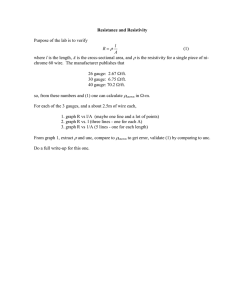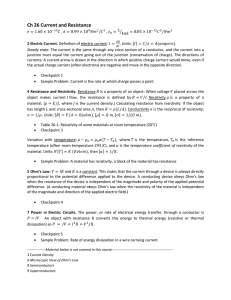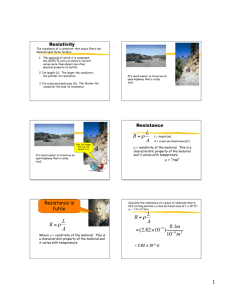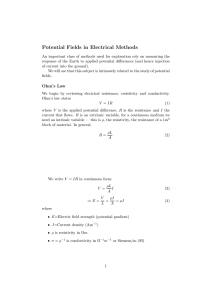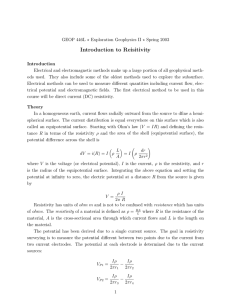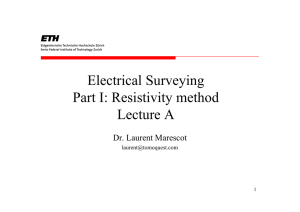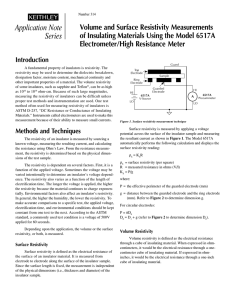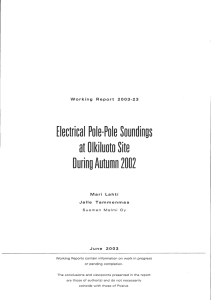Electric Current
advertisement
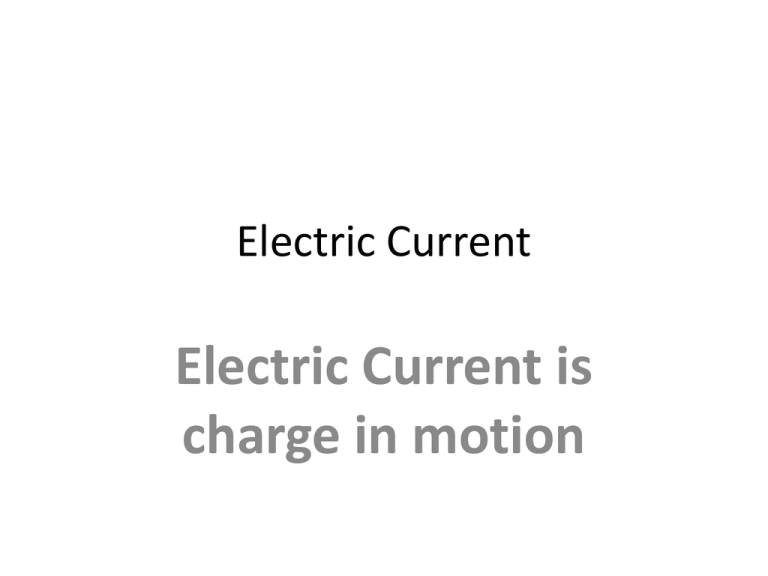
Electric Current Electric Current is charge in motion Electric Current from batteries In 1780s Volta found certain combinations of metals, such as zinc and silver, produced an electric current that caused a separation of the leaves of an electroscope. Example: Carbon electrode and zinc electrode in sulfuric acid. Zinc ions enter the acid; electrons flow from zinc electrode (-) to carbon electrode (+). Thus, a potential difference is established between the two electrodes. Electric Current • Electric current is “FLOW OF CHARGE.” • 1 amp = 1 Coulomb/sec • Analogy: speed = distance/time • flow of traffic = cars/time • current flow = charge/time How many electrons are in 1 amp? • 1 amp = 1 Coulomb/1 second • How many electrons in 1 Coulomb? Example • What is the electric current in a conductor if 240 coulombs of charge pass through it in 1.0 minute? Direction of Current • When the conventions of positive and negative charge were invented 200 years ago, it was assumed that POSITIVE charge flowed in a wire. So, conventional flow of charge is using positive charge flowing from positive to negative. • Electron current is the opposite direction of conventional current. Potential Difference drives an electric current • To produce an electric current in a circuit, you need a potential difference. • Example: battery • Analogy: flow of water acted upon by gravity. • the greater the height, the greater • the current. An increase in height • causes a greater flow of water. Resistance • Materials offer “resistance” to the flow of current. • Analogy: resistance to current is like friction. • like friction, resistance causes heat • which is a loss of energy. Resistance = Voltage/Current • Resistance is measured in ohms. • R = V/C • Ohms = volts/amps Good Conductors (low resistivity) • Silver (1.59 x 10^(-8) resistivity) • Copper (1.68 x 10^(-8) resistivity) • Gold (2.44 x 10^(-8) resistivity) Semiconductors • Carbon ( 3 – 60 x 10^(-5) resistivity) • Germanium (1 – 500) x 10^(-3) resistivity) • Silicon (0.1 – 10 resistivity) Insulators (poor conductors) • Glass • Hard rubber Minimize Resistance in a wire • Thick • Short • cold Maximize Resistance in a wire • Long • Thin • hot Resistance Calculation • Resistance = (resistivity)(length/area) • Example: calculate the resistance of an aluminum wire that is 0.20 meter long and has a cross sectional area of 1.00 x 10^(-3) square meter. • R = (resistivity)(length/area) • = 2.65 x 10^(-8) (.20 m)/(1.00 x 10^(-3)) • = 5.30 x 10^(-6) Ohm’s Law • V=IxR • I = V/R • R = V/I Example • If the potential difference across a 30 ohm resistor is 10 volts, what is the current? • IR = V so, I = V/R = 10/30 = 0.33 amps Group Activity • Calculate the missing parameter using Ohm’s Law (IR = V) Volts • • • • • 1. 2. 3. 4. 5. 120 120 120 ? ? Resistance (ohms) 40 ? ? 6 24 Current (amps) ? 8 50 18 96


